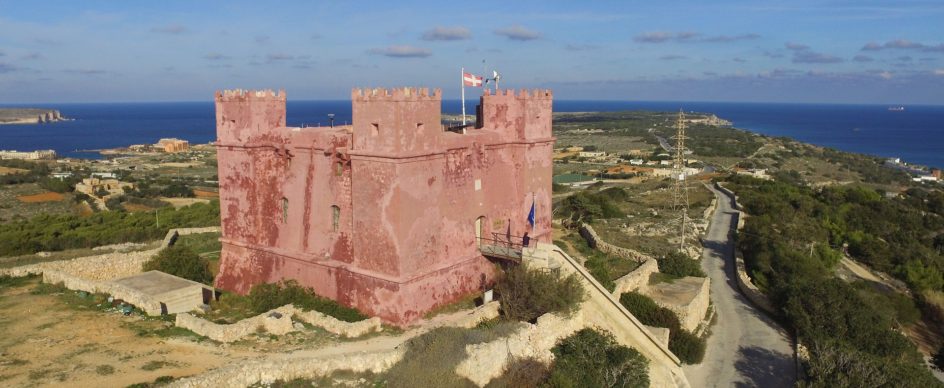
Malta’s Coastal Towers – A Historical Overview
- Mar 6, 2021
...a Mediterranean stronghold for powerful empires
For centuries, Malta served as a Mediterranean stronghold for powerful empires. Malta’s colonisers sought to maintain their sphere of influence in the Mediterranean by devising a clear defense strategy for the islands. Many a time, this strategy consisted of watchtowers and forts that were built to keep an eye out for potential seaward invaders and protect the islands in the event of an attack.
Wignacourt Towers
Grand Master de Wignacourt commissioned the construction of six towers – collectively referred to as the Wignacourt Towers. These towers, built between 1610 and 1620, were more than just watchtowers; they formed a key part of the Knights’ coastline defense strategy. One of the main towers, the St Lucian Tower was first used during 1614’s raid of Zejtun and was crucial in preventing the Ottoman forces from capturing Marsaxlokk – a seaside stronghold. The Towers continued to be used by successive colonisers and were a part of the British troops’ wartime resistance strategy during WWI and WWII.
The Wignacourt Towers are:
- Wignacourt Tower – St. Paul’s Bay – 1609 (intact)
- Saint Lucian Tower – Marsaxlokk – 1610 (intact)
- Saint Thomas Tower – Marsascala – 1614 (intact)
- Marsalforn Tower – Xaghra, Gozo – 1614 (collapsed in 1716)
- Saint Mary’s Tower – Comino – 1618 (intact)
- Santa Maria delle Grazie Tower – Xghajra – 1620 (demolished in 1888)
Lascaris Towers
Grand Master de Lascaris-Castellar was responsible for constructing a total of ten towers around Malta and Gozo. These towers were built in two phases: the first seven were erected between 1637 and 1638, while St Agatha Tower and two smaller watchtowers in Gozo were completed sometime between 1647 and 1652.
The Lascaris Towers are:
- Lippija Tower (Mgarr) 1637 (intact)
- Ghajn Tuffieha Tower (Mgarr) 1637 (intact)
- Blat Moghza Tower (Mgarr) 1637 (collapsed)
- Nadur Tower (Rabat) 1637 (intact)
- Qawra Tower (St Paul’s Bay) 1638 (intact)
- Sciuta Tower (Qrendi) 1638 (intact)
- Saint George’s Tower (St Julian’s) 1638 (intact)
- Saint Agatha’s Tower (Mellieha) 1647-9 (intact)
- Xlendi Tower (Munxar, Gozo) 1650 (intact)
- Dwejra Tower (San Lawrenz, Gozo) 1652 (intact)
De Redin Towers
These towers were collectively named after the Grandmaster De Redin, who personally funded the construction of thirteen new watchtowers that complemented Wignacourt and Lascaris’ efforts. De Redin based his towers’ designs on Lascaris’ Sciuta Tower in Qrendi, in that each building was two storeys high and had a square base and a roof turret.
De Redin strengthened the islands’ overall defence strategy by ensuring that each new tower had two other neighbouring towers that could be used for communication purposes. Therefore, the tower system provided a vital communication link from the Grand Harbour, all the way to Gozo. Standard communication signals included cannon shots by day and fire by night.
By the 19th century, most of the De Rodin Towers were decommissioned or demolished to make way for new forts and batteries. By the end of the British period, only nine out of thirteen towers remained intact.
The De Redin Towers are:
- Ghajn Hadid Tower (Mellieha) 1658 (collapsed in 1856)
- Ghallisa Tower (Naxxar) 1658 (intact)
- Saint Mark’s Tower (Naxxar) 1658 (intact)
- Madliena Tower (Pembroke) 1658 (intact)
- Saint Julian’s Tower (Sliema) 1658 (intact)
- Ahrax Tower (Mellieha) 1658 (intact)
- Benghisa Tower (Birzebbugia) 1659 (demolished)
- Xrobb l-Ghagin Tower (Marsaxlokk) 1659 (ruins)
- Triq il-Wiesgha Tower (Zabbar) 1659 (intact)
- Delimara Tower (Marsaxlokk) 1659 (demolished)
- Zonqor Tower (Marsascala) 1659 (demolished)
- Hamrija Tower (Qrendi) 1659 (intact)
- Wardija Tower (Zurrieq) 1659 (intact)




